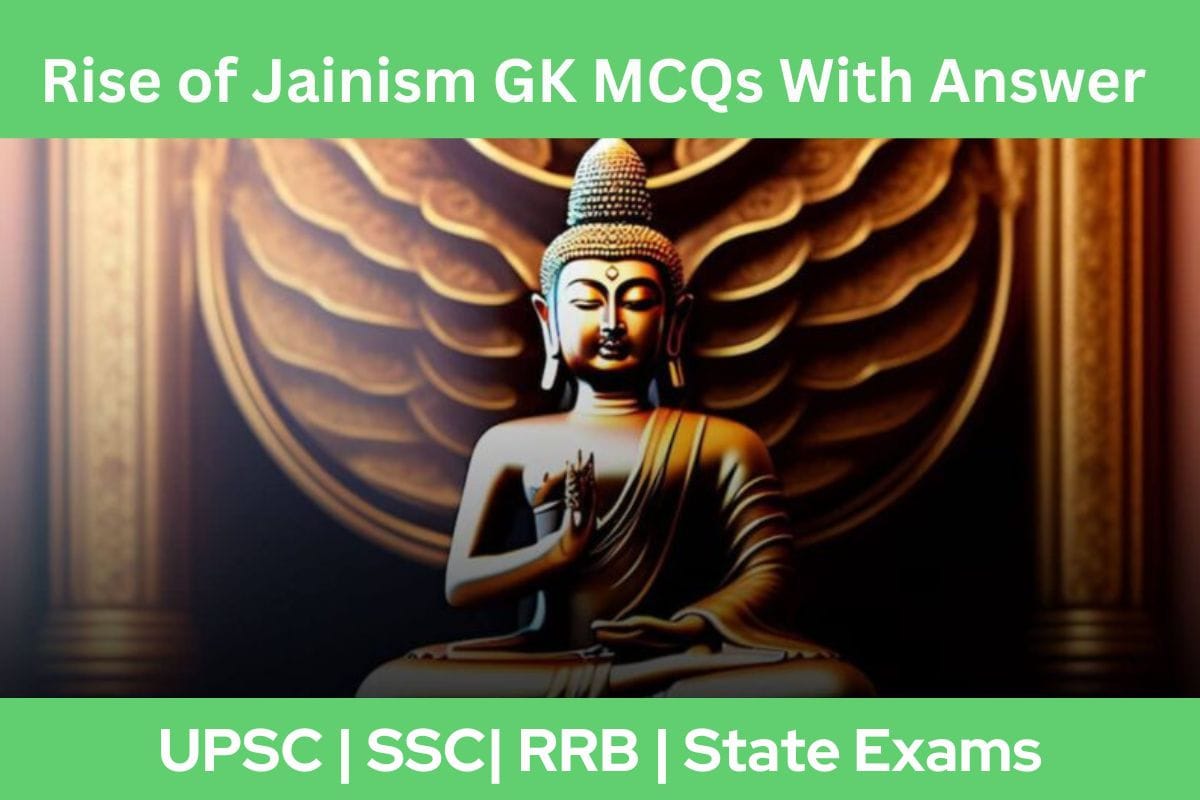
21. Which among the following is not correctly matched?
- Milinda Panho – Buddhism
- Tatwarthadhigam – Vaishnavism
- Mahapurana – Jainism
- All are correct
Show Answer
Correct Answer: Tatwarthadhigam – Vaishnavism
Tatwarthadhigam is a Jain scripture composed by Uma Swami. It is not associated with Vaishnavism.
22. Which of the following Jain doctrines signifies the system of describing reality from different points of view?
- Anekantavada
- Syadavada
- Nayavada
- Pancha Mahavrata
Show Answer
Correct Answer: Nayavada
The Jain doctrine of Nayavada refers to the system of describing reality from different points of view. It emphasizes that different perspectives provide partial truths, and absolute validity cannot be claimed.
23. Which of the following doctrine is added by Jainism?
- Ahimsa
- Satya
- Asteya
- Brahmacharya
Show Answer
Correct Answer: Brahmacharya
The fifth doctrine added by Jainism is celibacy/chastity (brahmacharya). Mahavira introduced this principle, which emphasizes total abstinence from sensual pleasure.
24. Yapaniya was the sect of which of the following?
- Vaishnavists
- Jainism
- Shaivists
- Buddhist
Show Answer
Correct Answer: Jainism
Yapaniya was a sect of Jainism. It originated from the Digambara tradition but also incorporated certain beliefs of the Shwetambara sect. Yapaniyas worshiped nude images of the Tirthankaras in their temples.
25. Which of the following was the founder of the Shwetambar creed?
- Kalakacharya
- Sthulabhadra
- Bhadrabahu
- Deverdhi Sharaman
Show Answer
Correct Answer: Sthulabhadra
Sthulabhadra was the founder of the Shwetambar creed during the first division of the Jain community. He stayed in the northern region during a severe famine. The Shwetambar sect derives its name from the white cloth worn by its followers.
26. Which of the following was the first disciple of Mahavira?
- Jamali
- Trishala
- Yasodha
- Prabhas
Show Answer
Correct Answer: Jamali
Jamali, who was also Mahavira’s son-in-law, holds a significant place in Jain tradition as one of Mahavira’s earliest and closest disciples. He is considered Mahavira’s first disciple. According to Jain texts, Jamali met Mahavira in Kundagrama village, Mahavira’s birthplace. Under Mahavira’s guidance, Jamali and five hundred warriors took monastic vows, embracing the ascetic way of life.
27. Which of the following is the only female Tirthankara?
- Kunthunath
- Mallinath
- Shantinath
- Suvidhinath
Show Answer
Correct Answer: Mallinath
Mallinath is indeed recognized as the only female Tirthankara in the Shwetambara sect of Jainism. She is revered as the 19th Tirthankara in the Shwetambara tradition. Her inclusion reflects the sect’s unique beliefs and hagiographical traditions.
28. Under whose leadership did the Shvetambara sect form?
- Bhadrabahu
- Sthalabahu
- Chandragupta Maurya
- Ashoka
Show Answer
Correct Answer: Sthalabahu
The Shvetambara sect is one of the major sects in Jainism, and it follows the teachings of Lord Mahavira. It was not formed under the leadership of Sthalabahu but rather developed as a distinct Jain sect based on differences in interpretations and practices. Bhadrabahu, on the other hand, played a significant role in the formation of the Digambara sect, which is another prominent Jain sect.
29. Under whose leadership did Jainism spread in South India?
- Sthalabahu
- Bhadrabahu
- Ashoka
- Chandragupta Maurya
Show Answer
Correct Answer: Bhadrabahu
Jainism did indeed spread in South India under the leadership of Bhadrabahu, a Jain ascetic and scholar. Bhadrabahu was associated with the Digambara sect and is known for his contributions to Jain philosophy and literature. His teachings and leadership were instrumental in promoting Jainism in southern regions of India.
30. Which ruler is credited for the spread of Jainism in Karnataka?
- Chandragupta Maurya
- Bimbisara
- Ashoka
- Samprati
Show Answer
Correct Answer: Chandragupta Maurya
The spread of Jainism in Karnataka is traditionally attributed to Chandragupta Maurya. After renouncing his throne and embracing Jainism, Chandragupta Maurya spent his last years as a Jaina ascetic in Karnataka. His conversion to Jainism and association with Karnataka are significant events in Jain history, contributing to the propagation of the religion in the region.


